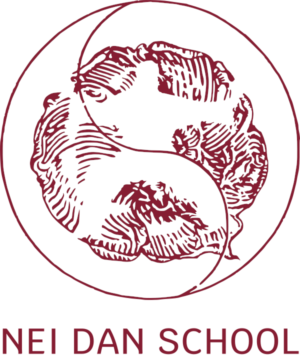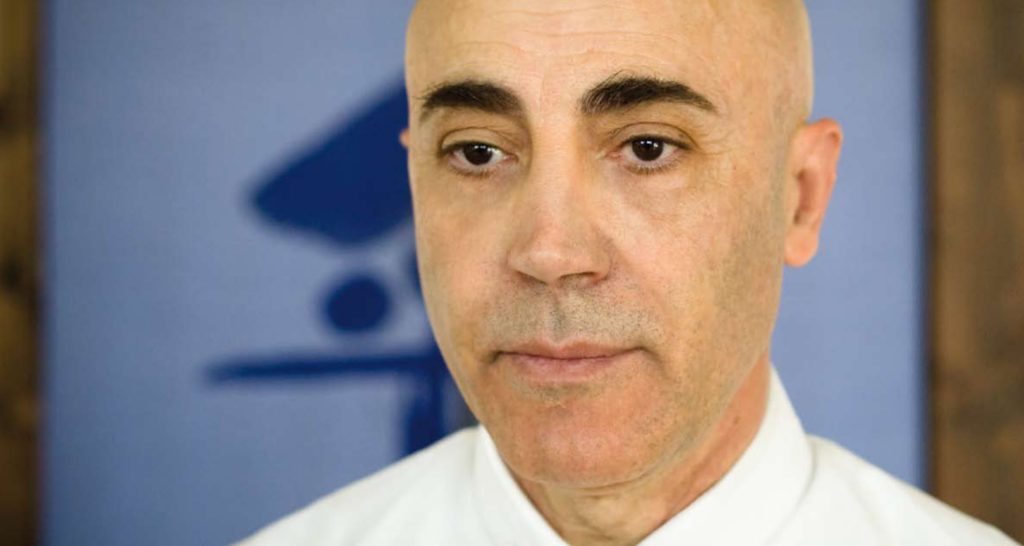
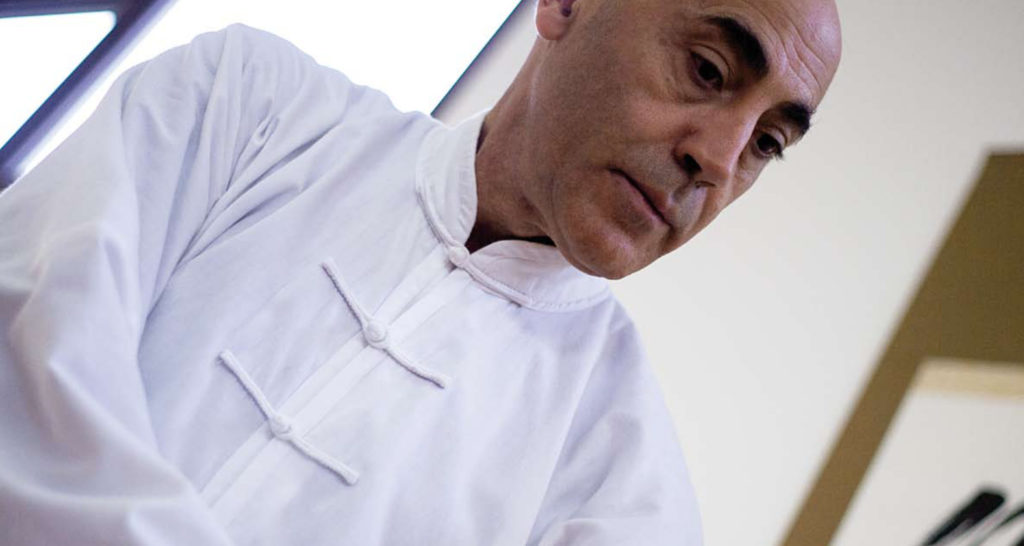
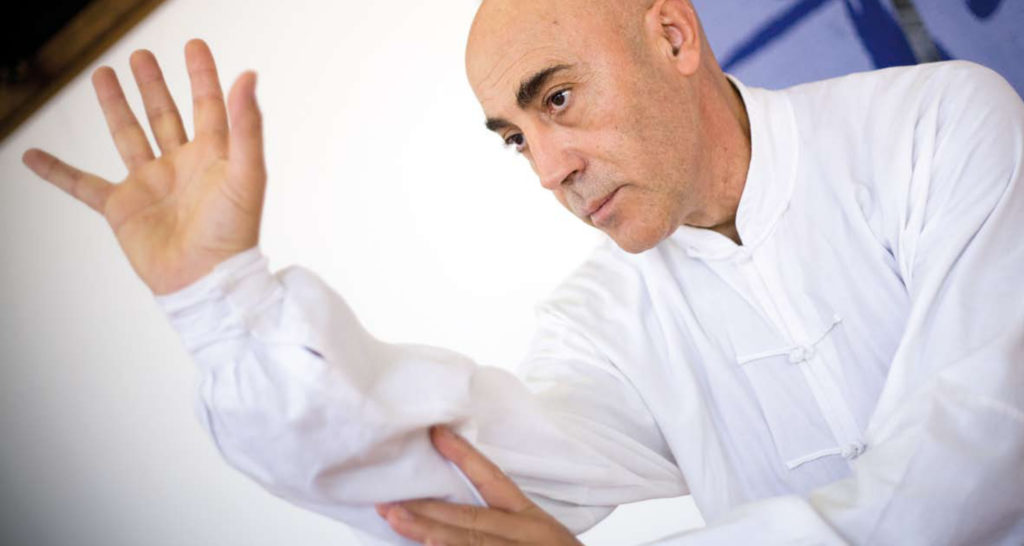
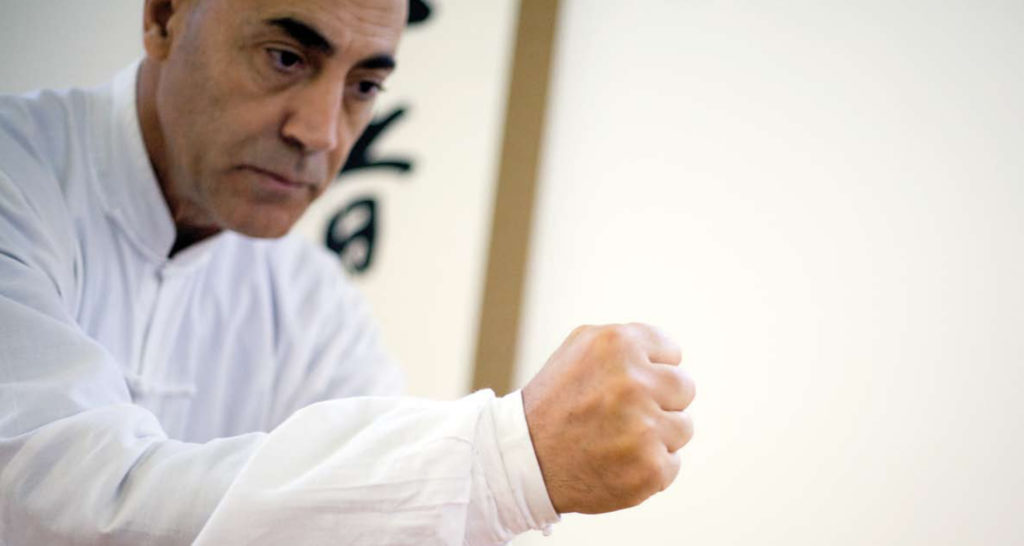
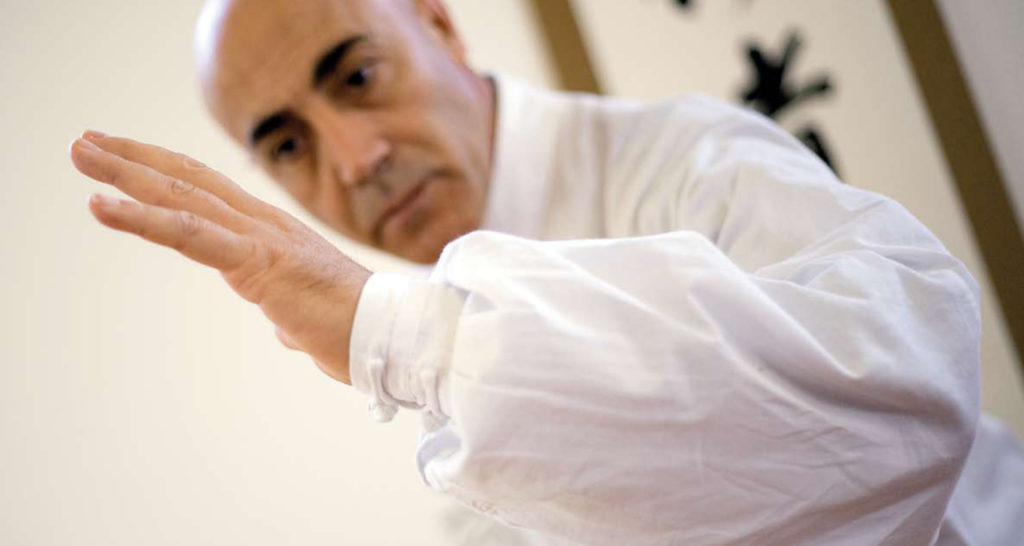
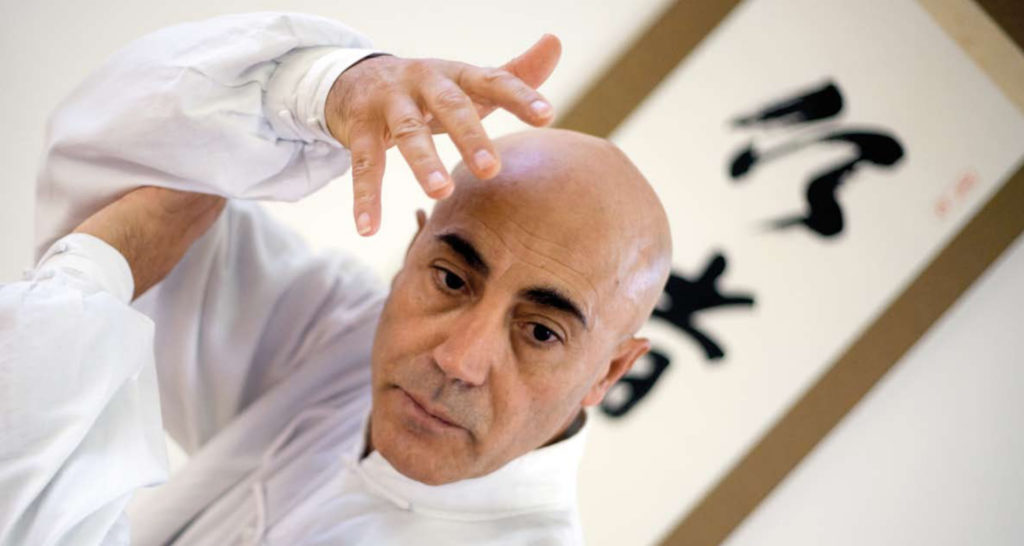
Flavio Daniele began his journey through martial arts in 1967. He practised Judo and Karate, reaching 3rd dan in Shotokan under the guidance of Master Hiroshi Shirai, before turning his attentions to Chinese martial arts. At the same time, he developed an interest in Yoga, travelling to India to study under B. K .S. Iyengar.
In 1988, he left his studies of Japanese martial arts in order to devote himself entirely to Shaolin Gong Fu and Taiji Quan, which he had been exploring since the late 1970s, and the Yoga he had never abandoned. His innovative teaching methods—developed alongside some of the greatest martial arts masters in China and encompassing a range of styles and aspects of the disciplines (combat, art of the body, science of the mind)—proved revolutionary for many masters and students, since they enabled an individual to fulfil their full potential regardless of their chosen style.
A star pupil of Master George (Guo Ming) Xu, he is the founder of the Nei Dan School, as well as the author of numerous books on the practice of Chinese internal martial arts and a series of teaching videos.
A star pupil of Master George (Guo Ming) Xu, he is the founder of the Nei Dan School, as well as the author of numerous books on the practice of Chinese internal martial arts and a series of teaching videos.






Flavio Daniele began his journey through martial arts in 1967. He practised Judo and Karate, reaching 3rd dan in Shotokan under the guidance of Master Hiroshi Shirai, before turning his attentions to Chinese martial arts. At the same time, he developed an interest in Yoga, travelling to India to study under B. K .S. Iyengar.
In 1988, he left his studies of Japanese martial arts in order to devote himself entirely to Shaolin Gong Fu and Taiji Quan, which he had been exploring since the late 1970s, and the Yoga he had never abandoned. His innovative teaching methods—developed alongside some of the greatest martial arts masters in China and encompassing a range of styles and aspects of the disciplines (combat, art of the body, science of the mind)—proved revolutionary for many masters and students, since they enabled an individual to fulfil their full potential regardless of their chosen style.
A star pupil of Master George (Guo Ming) Xu, he is the founder of the Nei Dan School, as well as the author of numerous books on the practice of Chinese internal martial arts and a series of teaching videos.
A star pupil of Master George (Guo Ming) Xu, he is the founder of the Nei Dan School, as well as the author of numerous books on the practice of Chinese internal martial arts and a series of teaching videos.
First steps: Judo
Begins his studies of martial arts with Judo in 1967, joining his first gym on his birthday, 16th November
Training in Karate and Yoga
In 1970, his focus turns from Judo to Shotokan Karate, a discipline he is to study for more than fifteen years. He gains his black belt 1st dan in 1972 and his 2nd dan in 1974, when he also takes up Iyengar Yoga.
Travels in India and Gong Fu
Travels to Pune to study Yoga under Master Iyengar himself. The same year, he becomes a teacher of Shotokan Karate and kindles an interest in Chinese Gong Fu (Shaolin and Taiji Quan).
The “Shift” towards China
In 1980, after reaching 3rd dan in Karate under Master Hiroshi Shirai, he abandons the discipline to devote himself to Chinese martial arts, while furthering his studies of Yoga.
Meeting his Mentor: George Xu
In 1995, he is introduced to the Chinese master George (Guo Ming) Xu. That same year, he founds the Nei Dan School, a version of which he launched two years earlier under the name Tavola di Smeraldo (“Emerald Table”). In 1966, he abandons his career as a computer engineer to devote himself entirely to the spreading and teaching of Chinese martial arts.
Starting the writing adventure
Publishes The Three Ways of the Tao. The book is Master Daniele’s first systematized contribution to a line of research that combines martial arts, body movement and energy.
The East-West Bridge
Continues his quest to raise the profile of internal martial arts by publishing widely: I tre poteri segreti del Taiji Quan (“The Three Secret Powers of Taiji Quan”) (2001); Il potere segreto del corpo nelle arti marziali (“The Secret Power of the Body in Martial Arts”) and Il Taiji Quan di Stile Chen (“Chen-Style Taiji Quan”) (2004); Scienza, Tao e arte del combattere (“Science, Tao and the Art of Combat”) (2005); Xin Yi Quan. L’arte del combattimento istintivo (“Xin Yi Quan: The Art of Instinctive Combat”) (2009); and The Fourth Way of the Tao: The Way of the Heart (2016). In 2006, he organises the first Oriente e Occidente (“East and West”) conference, a project which will later develop into heartmind Lab.
The First Masters
The school celebrates having more than fifty instructors spread throughout Italy, elevating eight of its most renowned pupils to the status of Master after twenty years of study.
